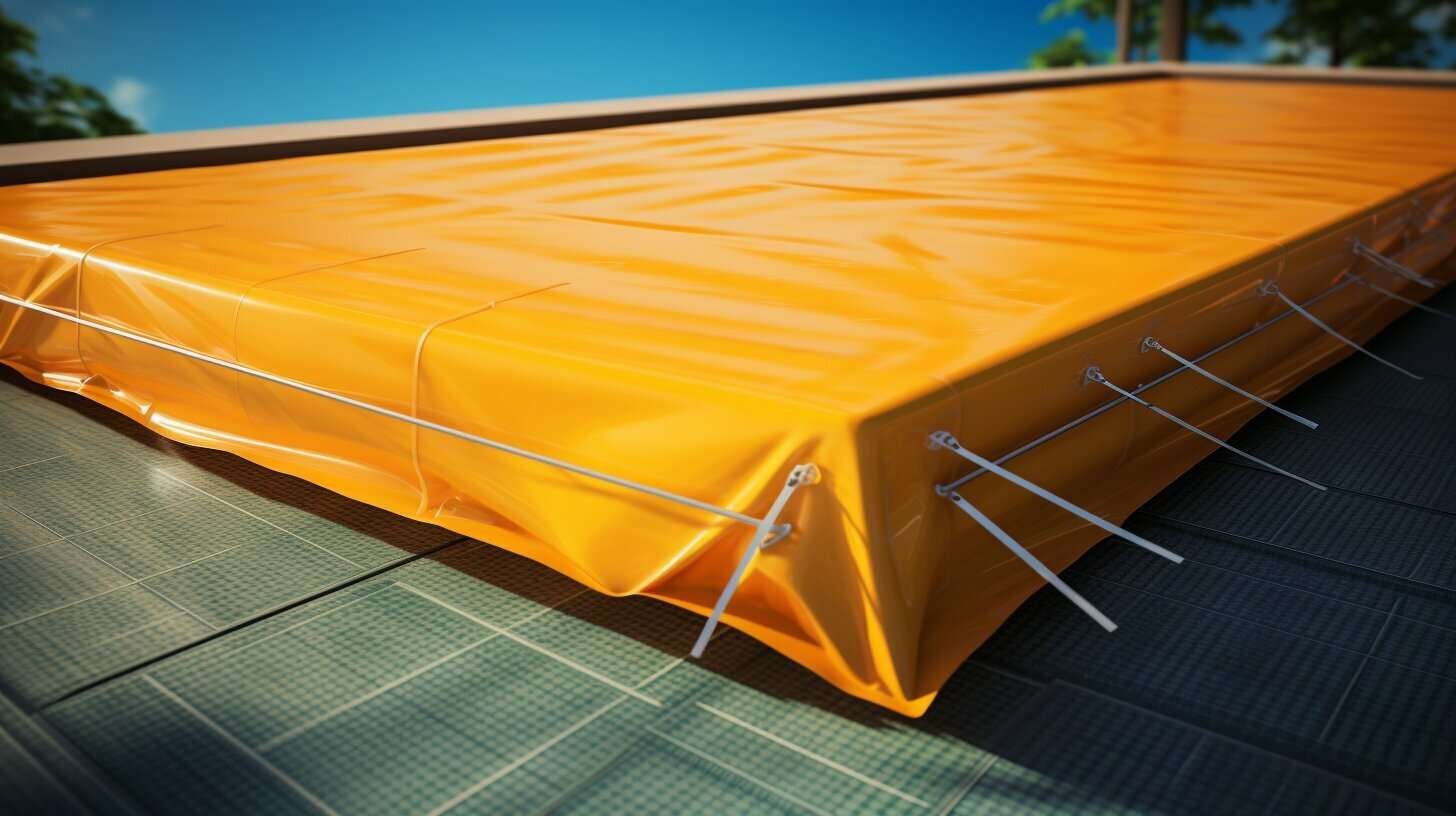Welcome to my expert guide on swimming pool covers. As a professional copywriting journalist, I understand the importance of protecting your pool from debris and maintaining its cleanliness. In this article, I will provide valuable information on the different types of swimming pool covers, their benefits, installation and maintenance tips, safety considerations, cost factors, and environmental impact. By the end of this guide, you will be equipped with all the knowledge you need to choose the right pool cover for your needs and safeguard your pool. One of the most popular types of swimming pool covers is solid pool covers. These covers are made of durable materials and provide excellent protection against leaves, dirt, and other debris. They also help to retain heat and reduce evaporation, making them an energy-efficient choice for pool owners. With proper maintenance, solid pool covers can offer years of reliable performance and peace of mind for pool maintenance.
Key Takeaways:
- Swimming pool covers are essential for protecting your pool from debris and maintaining its cleanliness.
- There are different types of swimming pool covers, including pool safety covers, automatic pool covers, winter pool covers, and mesh pool covers.
- Using a pool cover can provide various benefits such as reducing evaporation, preventing heat loss, saving energy, and reducing chemical usage.
- Proper installation and maintenance of pool covers are crucial for their effectiveness and longevity.
- Pool covers can also contribute to water conservation, energy efficiency, and reduced chemical usage, promoting sustainability.
Types of Swimming Pool Covers
When it comes to swimming pool covers, there are many different types to choose from. Depending on your needs and budget, you can select from pool safety covers, automatic pool covers, winter pool covers, and mesh pool covers.
Pool Safety Covers: These covers are made from heavy-duty materials such as vinyl or mesh, and are designed to prevent accidental drowning by providing a barrier that is strong enough to support the weight of an adult. They are typically anchored to the pool deck with straps and require professional installation.
| Pros | Cons |
|---|---|
| High level of safety | More expensive |
| Long lifespan | Difficult to install by oneself |
Automatic Pool Covers: These covers are motorized and can be opened or closed with the push of a button. They are usually made from vinyl or other durable materials and can be customized to fit any size or shape of pool.
| Pros | Cons |
|---|---|
| Convenient | Requires electrical connection |
| Energy-efficient | Expensive |
Winter Pool Covers: These covers are designed to protect your pool during the off-season when it is not in use. They are made from material that is resistant to extreme temperatures and weather conditions.
| Pros | Cons |
|---|---|
| Protects pool during winter months | Not suitable for year-round use |
| Prevents debris from entering the pool | May require additional support to prevent sagging |
Mesh Pool Covers: These covers are made from a mesh material that allows water to pass through while blocking debris. They are typically secured to the pool deck with springs and require little maintenance.
| Pros | Cons |
|---|---|
| Lightweight and easy to handle | Not suitable for winter use |
| No need for a cover pump | May allow some sunlight to enter the pool |
Each type of swimming pool cover has its advantages and disadvantages. Consider your specific needs and usage patterns to select the one that best suits your situation.

Benefits of Using a Swimming Pool Cover
Swimming pool covers provide numerous benefits that can save pool owners both time and money in the long run. The use of a swimming pool cover can reduce evaporation, which can help keep the pool water at a consistent level. Additionally, pool covers prevent heat loss and save energy by reducing the need for pool heaters to maintain the desired temperature.
Moreover, pool covers can also reduce chemical usage by minimizing the amount of debris and other contaminants entering the pool water, which can help balance the chemical levels and ultimately lead to healthier and cleaner pool water. The use of a pool cover can also help conserve water by reducing the need to refill the pool due to evaporation.
Swimming pool covers are not only practical but also offer a peace of mind for pool owners concerned with safety. The right pool cover can prevent accidents and keep children and pets from accidentally falling into the pool. In certain cases, pool safety covers may be required by law to ensure the safety of children and animals.
Overall, investing in a swimming pool cover is a smart choice that can offer a range of benefits for pool owners. From saving money on energy bills and chemical costs to enhancing pool safety and cleanliness, pool covers are a valuable addition to any pool maintenance routine.
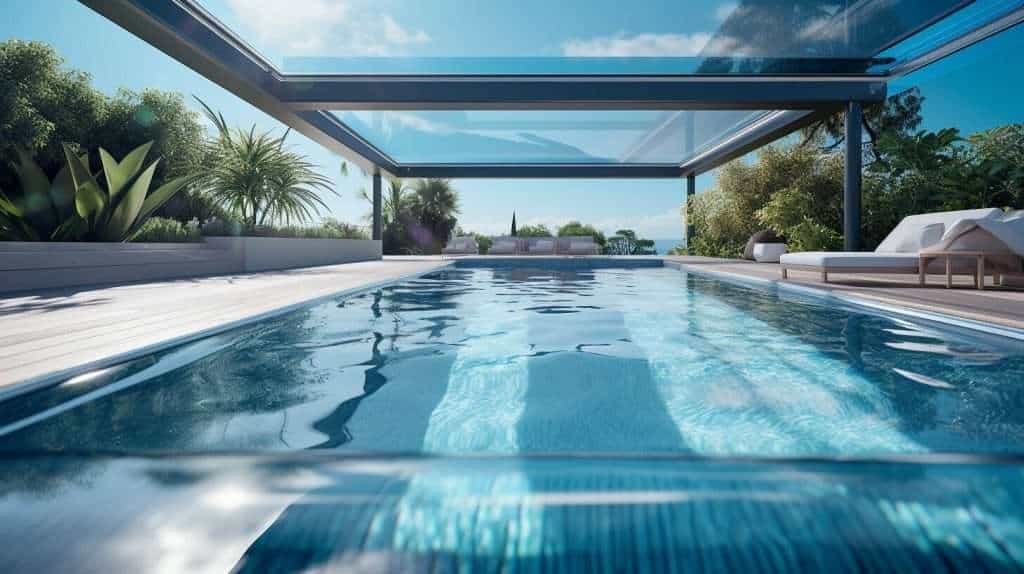
Installing a Swimming Pool Cover
Proper installation of a swimming pool cover is crucial to ensure it provides effective protection for your pool. Here are some step-by-step instructions to help you install your pool cover:
- Measure your pool: Before purchasing a cover, measure your pool’s dimensions to ensure a proper fit.
- Clean the pool: Remove any debris or dirt from the pool before covering it to prevent damage to the cover.
- Lay out the cover: Unfold the cover and lay it out over the pool. Ensure the cover is centered and straight before proceeding.
- Secure the cover: Attach the cover to the pool using the appropriate fasteners. The type of fasteners needed will depend on the type of cover you have. Make sure the cover is snug and secure to prevent wind from getting under it.
- Create drainage: If you have a solid cover, create drainage to prevent water accumulation on top of the cover. This can be achieved using a pump or a drainage system built into the cover.
- Maintain the cover: Regularly inspect the cover for any tears or damages. Keep it clean and store it properly when not in use.
It is important to note that some types of pool covers, such as automatic covers, require professional installation. Make sure to consult with a professional if you are unsure about the installation process.
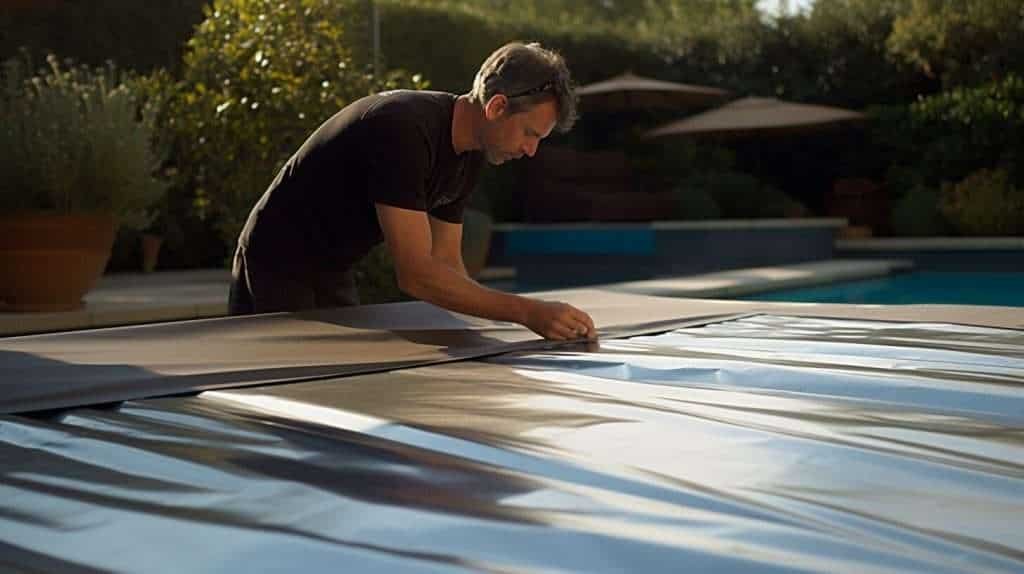
Proper installation is key to ensuring your pool cover is effective in protecting your pool from debris and maintaining its cleanliness. By following these guidelines, you can install your pool cover with ease and enjoy a clean and well-protected pool.
Safety Considerations with Pool Covers
When it comes to swimming pool covers, safety should be a top priority. Whether you have children, pets, or simply want to avoid accidents, there are several precautions you should take to ensure the proper use of your pool cover.
Firstly, make sure your pool cover is installed correctly and securely. The cover should fit snugly over the pool, and all anchors and straps should be tightly fastened. This will prevent the cover from slipping or being blown off by strong winds.
If you have a pool safety cover, it’s critical to follow the manufacturer’s instructions for use. These covers are designed to support the weight of an adult, but they’re not indestructible. Avoid walking or playing on the cover, and keep children and pets away from the pool area when the cover is in use.
It’s also a good idea to invest in an alarm system that will alert you if anyone or anything enters the pool area while the cover is in place. This can provide an added layer of security and peace of mind.
Finally, remember to inspect your pool cover regularly for any signs of wear or tear. Replace any damaged or worn-out parts immediately to ensure the continued safety of your pool cover.
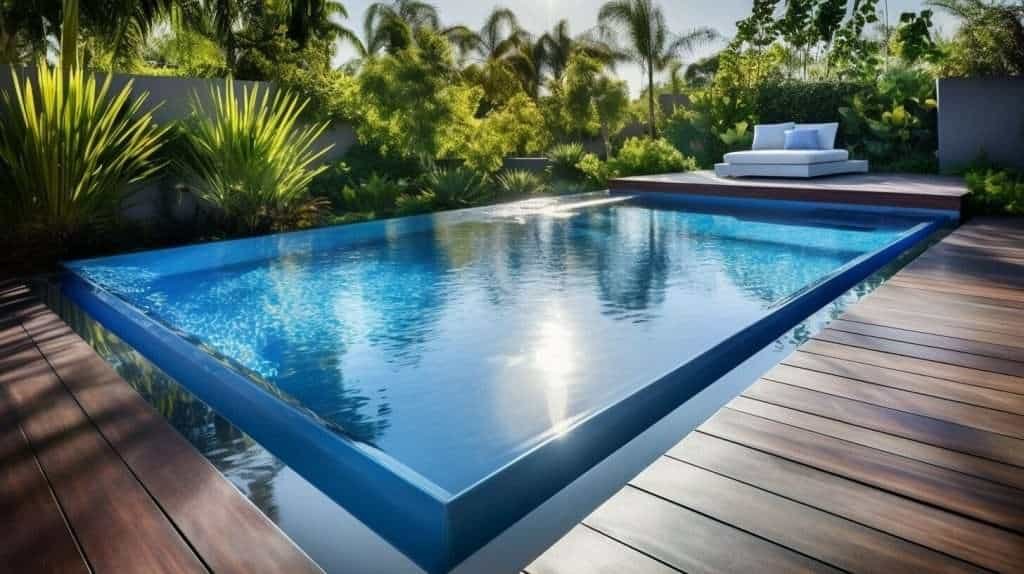
“Proper safety precautions can prevent accidents and ensure that your pool cover is doing its job effectively.”
Safety Considerations with Pool Covers
When it comes to swimming pool covers, safety should always be a top priority. While covers are effective in keeping debris out of the pool and maintaining water cleanliness, they can also present potential hazards if not installed or used correctly.
One important aspect of pool cover safety is ensuring that the cover is secured properly. A cover that is not securely fastened can flap in the wind, creating a tripping hazard and potentially even falling into the pool if strong enough winds persist. This is why it’s important to follow manufacturer instructions and recommendations for securing the cover, whether it’s with straps or anchors.
Additionally, it’s crucial to make sure that the pool cover is appropriate for your needs and usage patterns. For example, if you have children or pets, a pool safety cover with a weight capacity is highly recommended to prevent accidents. It’s also important to ensure that the cover material is strong and durable enough to withstand any potential weight or pressure.
Pool covers can also pose risks during installation or removal. To reduce the risk of injury, take caution when handling heavy covers or sharp installation tools, and always follow safety guidelines and procedures. If you’re unsure about how to properly install or remove your pool cover, consider hiring a professional.
Overall, pool covers are a valuable asset in pool maintenance and protection, but it’s important to approach their installation and use with safety in mind. By following manufacturer recommendations and safety guidelines, you can enjoy the benefits of a clean and protected pool while minimizing potential hazards.

Cost and Investment of Pool Covers
When considering purchasing a swimming pool cover, it’s important to take into account the initial cost, long-term savings, and potential maintenance expenses. Some covers can be more expensive than others, but it’s important to remember the value of protecting your pool in the long run.
While the upfront cost may seem high, swimming pool covers can actually save you money over time by reducing evaporation, preventing heat loss, and lowering chemical usage. In addition, covers can help regulate the temperature of your pool, reducing the need for heating or cooling systems.
It’s important to also factor in any maintenance expenses associated with your chosen pool cover. Some covers may require more upkeep or repairs than others. However, regular maintenance is crucial in prolonging the lifespan of your cover and ensuring its effectiveness.
Overall, investing in a high-quality swimming pool cover can provide significant cost savings and protection for your pool. Trust me, the investment is worth it in the long run.

Common Misconceptions about Pool Covers
Many pool owners hold certain misconceptions or false beliefs about swimming pool covers. Let me clear up some of the most common myths.
Myth #1: Pool covers are hard to use and require a lot of effort.
This is not entirely true. While certain types of covers require manual installation and removal, others, such as automatic pool covers, can be easily operated with a push of a button.
Myth #2: Pool covers are not necessary for indoor pools.
Although indoor pools are protected from outdoor debris, they still lose heat and water through evaporation. Hence, a pool cover can help reduce energy consumption and save costs on heating and maintenance.
Myth #3: Pool covers are only useful in the winter.
On the contrary, pool covers are beneficial year-round, as they prevent debris accumulation, limit water evaporation, and maintain consistent water temperature.
Myth #4: Pool covers are unsightly and ruin the pool’s aesthetics.
Today’s swimming pool covers come in a variety of materials and colors to match any pool style or design. Some covers can even enhance the pool’s appearance by creating a smooth surface or reflecting light.
Now that some of the major myths have been debunked, you can confidently consider investing in a swimming pool cover. Let’s move on to other important aspects of pool cover maintenance and usage.

Environmental Impact of Pool Covers
Aside from the protection and cost-saving benefits, using swimming pool covers can also have a positive impact on the environment. Here are some ways in which pool covers promote sustainability:
| Environmental Benefit | Description |
|---|---|
| Water conservation | Pool covers reduce evaporation, limiting the need to refill the pool and conserve a valuable resource. |
| Energy efficiency | Covers trap heat and reduce heat loss, which lowers energy usage and decreases carbon emissions from heating systems. |
| Reduced chemical usage | Covers prevent debris from entering the pool, reducing the need for chemicals such as chlorine to maintain proper water chemistry. |
By using a swimming pool cover, you are not only protecting your pool and saving money, but also contributing to a healthier planet. It’s a win-win situation!
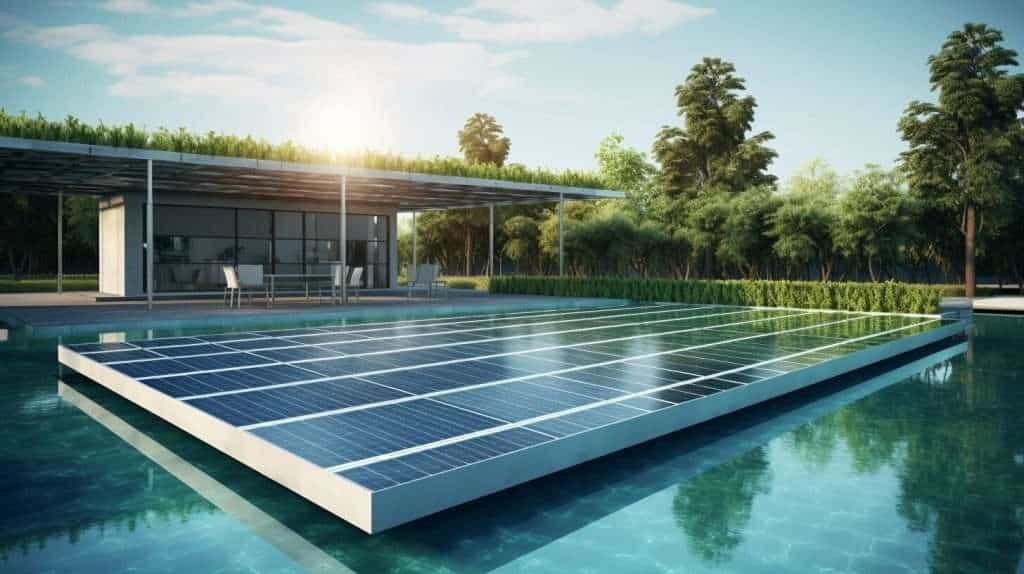
Choosing the Right Pool Cover for Your Needs
When it comes to buying a swimming pool cover, there are several factors to consider in order to choose the right one for your needs. Below are some tips to help you make an informed decision:
1. Pool Size
The size of your pool will be a major determinant in choosing the right cover. Measure your pool and ensure that the cover you choose is suitable for its dimensions. A cover that is too small will not cover the entire pool, while a cover that is too big may result in unnecessary expenses.
2. Climate
Consider the climate in your region. If you live in a region with harsh winters, a winter pool cover may be necessary to protect your pool from ice and snow. If you live in a region with strong winds, a sturdy cover that can withstand wind gusts will be ideal.
3. Safety Requirements
If you have children or pets, a pool safety cover may be necessary to prevent accidents. Pool safety covers are designed with strong materials that can support the weight of a child or pet, thus keeping them safe from falling into the pool.
4. Personal Usage Patterns
Determine how often you use your pool. If you use it frequently, an automatic pool cover may be more convenient for opening and closing the pool. If you use your pool less frequently, a manual cover may be a more cost-effective option.
5. Budget
The type of cover you choose will also depend on your budget. Automatic and safety covers are typically more expensive than manual and winter covers. However, keep in mind that investing in a high-quality cover can save you money in the long run by reducing energy and chemical usage.

By considering these factors, you can find the right swimming pool cover for your needs. Remember to choose a reputable supplier or manufacturer and ensure that the cover is properly installed and regularly maintained for optimal performance.
Additional Pool Cover Tips and Considerations
When considering a swimming pool cover, there are a few other factors to keep in mind. Here are a few additional tips and considerations:
- Choose the right color: The color of a pool cover can affect the pool’s temperature. Dark-colored covers absorb more sunlight and can help keep the pool warmer, while lighter-colored covers reflect sunlight and keep the pool cooler.
- Customization options: Some companies offer customized pool covers to fit non-standard pool shapes or sizes. Consider this option if a standard pool cover won’t fit your needs.
- Warranty information: Make sure to read the warranty information before purchasing a pool cover. Look for a warranty that covers both the material and the workmanship.
- Reputable suppliers or manufacturers: Look for reputable suppliers or manufacturers when purchasing a pool cover. Do your research and read reviews to ensure you’re buying a high-quality product from a trustworthy source.
By keeping these additional considerations in mind, you can ensure that you choose the best possible pool cover for your needs.
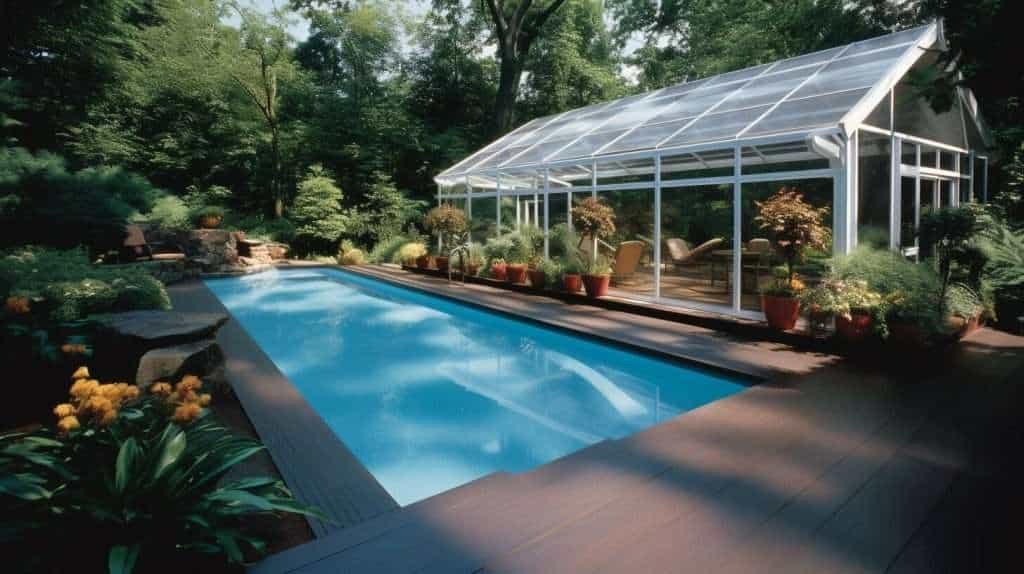
Safeguard Your Pool: Expert Tips on Swimming Pool Covers
In this article, I have provided in-depth information and expert advice on the importance of swimming pool covers and their benefits. From discussing the various types of covers available in the market to providing guidance on choosing the right cover for your needs, I hope to have answered all your questions regarding pool covers.
Conclusion
Investing in a good quality swimming pool cover is a decision that you will not regret. Not only does it help protect your pool from debris and maintain cleanliness, but it also promotes water conservation, reduces energy costs, and enhances safety. Remember to follow the installation and maintenance guidelines discussed in this article to ensure that your cover lasts for years to come. Don’t wait any longer, safeguard your pool today!
What Are Some Expert Recommendations for How Long to Keep a Pool Cover On?
Expert recommendations for how long to keep a pool cover on vary depending on factors like weather conditions and usage frequency. However, generally, it is recommended to keep the pool cover on when the pool is not in use, especially at night or during colder seasons. This helps conserve energy, maintain water temperature, and prevent debris from entering the pool. Regularly cleaning and maintaining the pool cover ensures its effectiveness and longevity. Overall, it is advisable to keep pool cover on to preserve water quality and reduce maintenance efforts.
FAQ
Q: Why is it important to safeguard your pool with a swimming pool cover?
A: Safeguarding your pool with a swimming pool cover is crucial to protect it from debris and maintain cleanliness. Additionally, using a pool cover helps to prevent water evaporation and heat loss, saving energy and reducing chemical usage.
Q: What are the different types of swimming pool covers?
A: There are various types of swimming pool covers available in the market, including pool safety covers, automatic pool covers, winter pool covers, and mesh pool covers.
Q: What are the benefits of using a swimming pool cover?
A: Using a swimming pool cover offers several benefits, such as reducing evaporation, preventing heat loss, saving energy, and reducing chemical usage. It also helps in maintaining the pool’s temperature and conserving water.
Q: How do I install a swimming pool cover?
A: To install a swimming pool cover, follow these steps: measure the pool, secure the cover properly, and maintain it regularly. Professional installation may be required for certain types of covers.
Q: How do I maintain my swimming pool cover?
A: Proper maintenance of a swimming pool cover involves cleaning it regularly, conducting periodic inspections, and performing necessary repairs. Regular maintenance helps to prolong the lifespan of the cover.
Q: Are swimming pool covers safe to use?
A: Yes, swimming pool covers, especially pool safety covers, are designed to enhance safety. They can prevent accidents, particularly for households with children or pets. It is important to ensure proper installation and use for maximum safety.
Q: What is the cost associated with swimming pool covers?
A: The cost of swimming pool covers includes the initial investment, long-term savings on energy and chemicals, and potential maintenance expenses. It is a worthwhile investment for protecting your pool.
Q: What are some common misconceptions about pool covers?
A: There are a few common misconceptions about pool covers, such as thinking they are difficult to use or that they hinder pool aesthetics. These are not true, and pool covers provide numerous benefits.
Q: What is the environmental impact of using pool covers?
A: Using pool covers has a positive environmental impact, as they contribute to water conservation, energy efficiency, and reduced chemical usage. They promote sustainability and responsible pool ownership.
Q: How do I choose the right pool cover for my needs?
A: When choosing a pool cover, factors to consider include pool size, climate, safety requirements, and personal usage patterns. Evaluate these factors and select the cover that best suits your needs and budget.
Q: Any additional tips and considerations for pool covers?
A: Some additional tips and considerations include cover color choices, customization options, warranty information, and reputable suppliers or manufacturers. These factors can help you make an informed decision and find the right pool cover.


